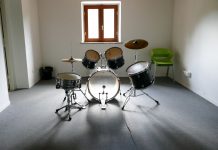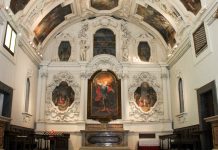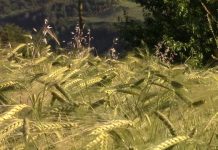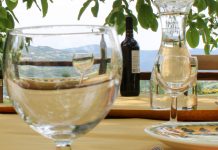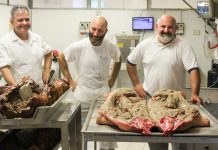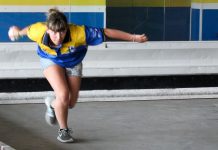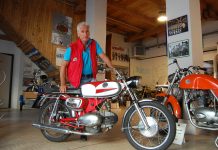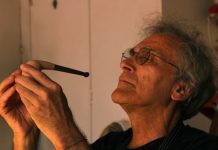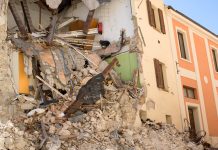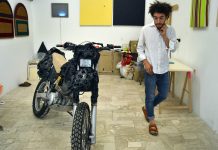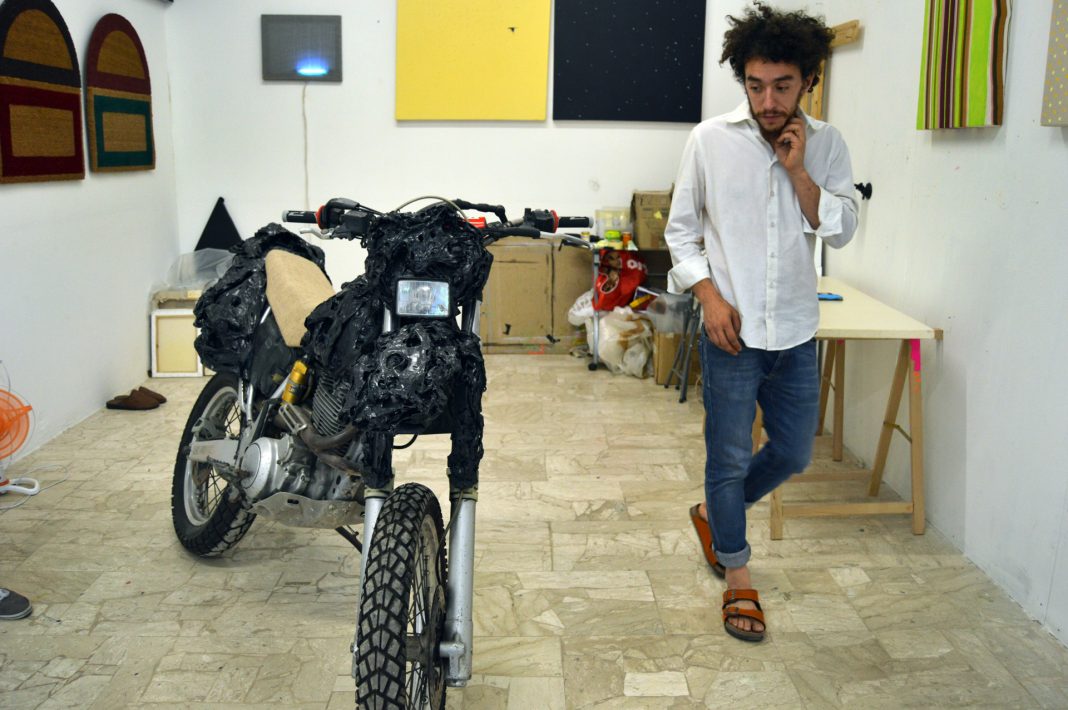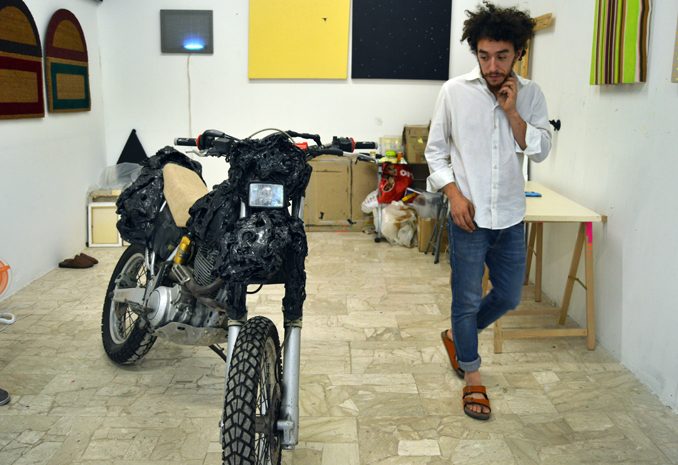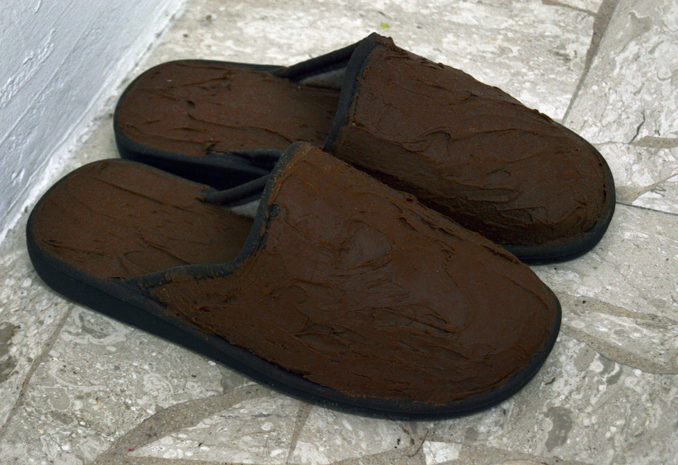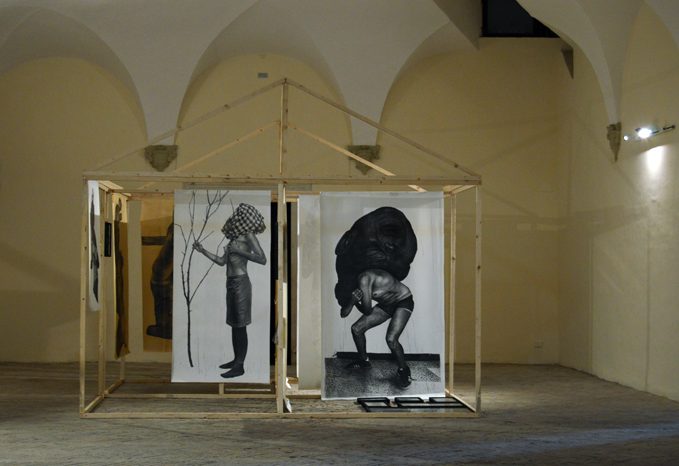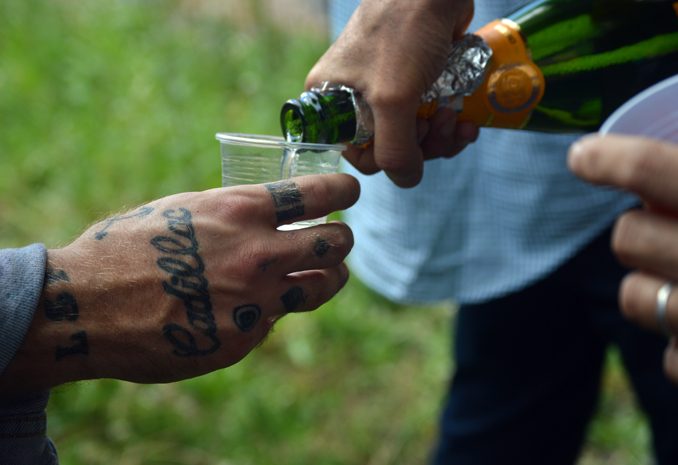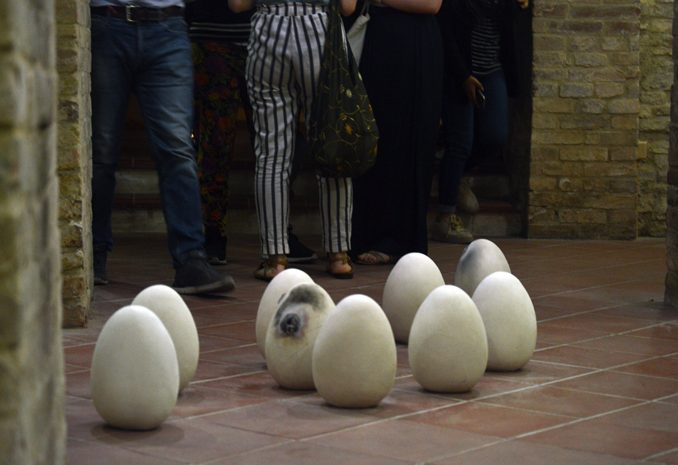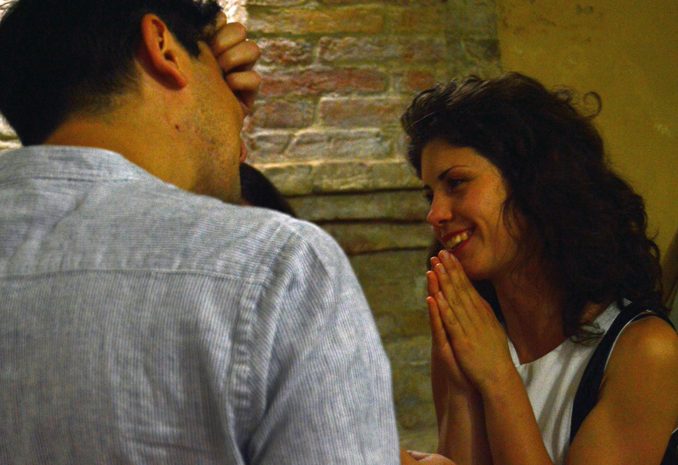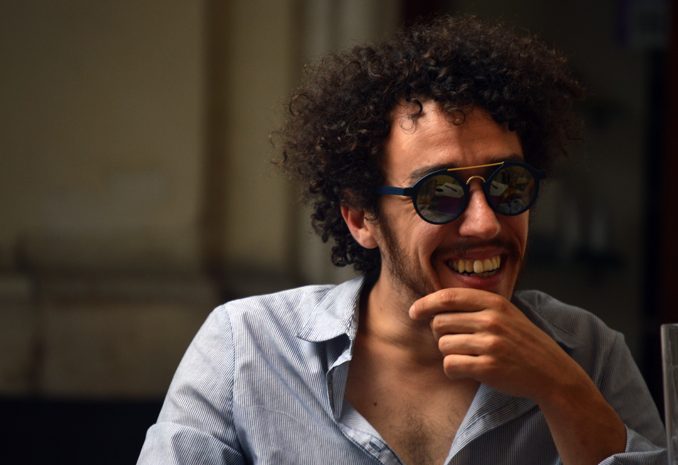New gallery space makes room for budding art scene
Davide Mancini Zanchi kneels down in the corner of his crisp, white studio to retrieve a pair of shoes. His space is fresh with natural light and the smell of plaster. The walls are lined with yellow, blue, and green canvases, all of which are either ripped by bullets or dotted with spitballs. A melted motorcycle sits casually in the middle of the workshop, as if it were an armchair or a coffee table. Zanchi shuffles across the airy studio, his wild curls bouncing with every step. He holds the shoes gingerly in his hands, careful to touch only the bottoms—an odd amount of care for average-looking, dingy brown slippers.
“Do you know what these are made of?” Zanchi asks with a devious smile. As he gets closer, it’s clear that the shoes are caked with something, maybe even sculpted from clay. He pauses to build suspense.
He lifts the footwear up to his nose, taking a big whiff. A toothy grin forms across his face before he finally reveals the answer.
“Nutella!”
Zanchi is among a small group of young, contemporary artists working to reinvent the perception of art in the quaint Marche town of Urbino. Home to renowned master painter Raphael Sanzio, the city boasts a rich history of arts and culture. With sprawling archways, worn cobblestone streets, and bustling piazzas, Urbino is still a vision of 15th century Italy. But a new movement of young artists is taking shape, some of it literally underground, below the ancient Renaissance streets.
Zanchi creates his art behind the deceptively average brick and glass exterior of his studio in the quiet village of Fermignano. His work is conceptual, bold, reflective, even zany. He produces paintings, sculptures, and installations, all using found objects. From mop handles to heat lamps, car headrests to handkerchiefs, household items are a staple of Zanchi’s work.
“The ultimate goal is to change how people conceive art in general.”
At first glance, his pieces may seem humorous, but they offer insight on everyday life through themes of usefulness and utility. “The ultimate goal is not to make people use the artwork,” says Zanchi, “but to change how they conceive art in general.”
During the Italian Renaissance, artwork was literal, realistic, and scholarly in style. Renaissance artists focused more on accuracy than creativity. Art during this period was a stiff, conservative field, practiced and enjoyed mainly by the wealthy and educated.
Though the ancient stone towers are reminders of a bygone era, at one time Urbino was the face of modernity. Today, artists are still drawn to the city’s magical atmosphere. Although the area has held on to its Renaissance charm, artists of today are creating work that is very different from that of their traditional predecessors.
On a muggy June afternoon, artists and lovers of art gather in the dungeon-esque basement corridors of the Accademia di Belle Arti, Urbino’s Academy of Fine Arts, to observe the work of contemporary sculpture students at their exhibition, titled In/Stabile. Throughout the labyrinth of rooms are abstract sculptures and installations of all kinds. Strobe lights distort the movement of spectators entering the space. Inside, art is hung, propped, laid, and strewn all over the gallery walls, floor, and ceiling. Young people with septum rings, neon orange hair, tattoo sleeves, and dreadlocks wander their way through stone archways, admiring work of their peers.
Noa Pane, a fourth year student at the Accademia is one of the artists responsible for organizing the opening. Her artwork focuses mainly on sculpture, installation, and performance, investigating the roles and responsibilities of women in today’s society. Pane’s piece in the opening, from her series “Constriction,” is a bulbous, rubbery material, wrapped in an industrial-looking metal wire, suspended from the ceiling. While she says there is not much of a professional community of modern artists in Urbino, she believes the Accademia’s emerging artists have something special in this underground group.
“We are fortunate enough to be able to talk with nationally recognized art critics and professors, we can exchange views, continually compare our work with them, and this compensates for the lack of a true network of contemporary art,” says Pane.
But for the few Accademia graduates who have passed up larger cities to pursue art in Urbino, things feel different.
“I’m alone here,” says Zanchi, seated at a café table alongside Urbino’s Piazza de la Repubblica. “It’s only me.”
A toothy grin forms across his face, causing the ends of his wiry moustache to curl upwards. He lets out a loud, boyish laugh as he sets his tall glass down on the café table. The mirrored surface of his navy blue sunglasses catches curious passerbys, all of whom seem to slow their pace. He bounds up from his seat every so often to greet passing friends, his signature curls brushing against their faces as he kisses their cheeks.

While he may not literally be alone, Zanchi is one of very few established contemporary artists in the Marche region—for now, at least. Recently, however, Urbino’s art world has been taking steps to recognize young artists in the area. Zanchi, among others, has felt the shift, pointing to the example of Spazio K, a contemporary art gallery that opened in March 2017 and focuses on the work of young, emerging artists.
“It’s a great initiative because here in the Marche, there are very few exhibits that show art like that,” says Zanchi.
The underground space, brought to life by the Galleria Nazionale delle Marche, is located in the ancient basement kitchens of Urbino’s Palazzo Ducale. The gallery consists of one large room, filled with yellowish lighting and cool, thick air. Sprawling arches stretch from floor to ceiling in the weathered stone cellar. Six centuries ago, this space was used to prepare Duke Federico da Montefeltro’s meals during the height of the Renaissance. Today, Spazio K is where young artists prepare to launch themselves into a renaissance of their own, creating artwork unimaginable to the long-since-deceased inhabitants of the Palazzo.
Zanchi has the distinction of being the first artist to be featured in Spazio K, as part of an exhibition titled La Conquesta dello Spazio or “The Conquest of Space.” Curator Riccardo Bandini explains that the exhibition references both the physical and spiritual journeys a person must take during their lives. Zanchi displayed several pieces during his month-long exhibit earlier this year, including his prized melted motorcycle. The juxtaposition between edgy work of young, contemporary artists and the ancient stone space which houses it is blatant.
To many artists, however, this duality between traditional and contemporary is nonexistent. What some may see as breaking free from the shackles of traditional art, here in Urbino, is just another phase in a larger cycle. “Art is always contemporary in its time. Renaissance art was contemporary,” says Bandini. “The past is the future. It’s an infinite circle.”
Though the contemporary art scene in Urbino may be part of a larger cycle, it, like many movements throughout history, has received its share of criticism.
Zanchi reflects on these criticisms, tapping his fingers on the café table with the energy of a young boy. “In Italy we say ‘Posso farlo anche,’ it means, ‘I can make it too.’” Laughing behind his amber beer, he elaborates. “People in Italy are used to seeing Raphael’s art and things like that, so when they see my art they say, ‘I can make it too, that’s easy.’”
While Zanchi might not always utilize the traditional skills that Renaissance masters like Raphael did, not everyone can create innovative works of art. Anyone who has ever tried to create something never done before can attest to the fact that whatever the medium, it’s no easy feat. If Nutella shoes are today’s artistic innovation, what is the future of contemporary art?
Posed with this question, Zanchi rolls a cigarette on the leg of his faded jeans, a stern expression on his face. Whether his forehead is creased from contemplation or concentration is unclear.
“Oh,” he says, constructed cigarette now in hand, “I don’t know what may be next.”
He chuckles as he brings the cigarette to his mouth. He struggles to light it between his laughter and the slight breeze of impending showers.
“Anything.”
Slideshow
This article also appear in Urbino Now magazine’s Urbino Centro section. You can read all the magazine articles in print by ordering a copy from MagCloud.



